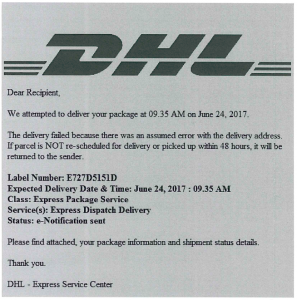Do you know how to check if the emails you are getting are from a legit source? According to a website called Quora, 2.4 million emails are sent every second, that is a lot of emails. But not all emails are created equal, meaning some emails are sent with the intention of attacking users and you have to be very careful before opening one.
Check The Domain Name Not The Email ID.
What Does It Mean?
Here is an example: Recently, a friend of mine got an email from dhlexpress@dispatch.com, informing him that “The attempt to deliver his package has failed…“. The email has an attachment for him to open and resolve the issue. Luckily he didn’t open the attachment rather he brought it to my attention and I did what I always do when I get suspicious emails – I checked the domain name!

Here is what it means; Every email is a combination of an email ID and domain name at least. Take the above email, dhlexpress@dispatch.com, for an example. The first part “dhlexpress” is called the email ID. This can be anything and it might be difficult to check the legitimacy of an email address based on its ID. Our focus should be on the next part of the email, the part after the @ sign, “dispatch.com“. This is the domain of the email that will help us in checking whether the email is fake or not.
Do This:
- Copy only the domain part (dispatch.com), paste it on your browser’s address bar and hit Enter key.
- If a website doesn’t appear on your browser, your investigation is done here, it is a fake email.
- If a website is displayed on your screen and the website is not related to the email content, that is another reason for you not to open any attachment sent through the email. For example the above domain, dispatch.com, looks like a news agency rather than post office (DHL).
Here are some examples of fake email addresses:
- office@korloycompany.ro
- block@mail.com
BE SAFE!
